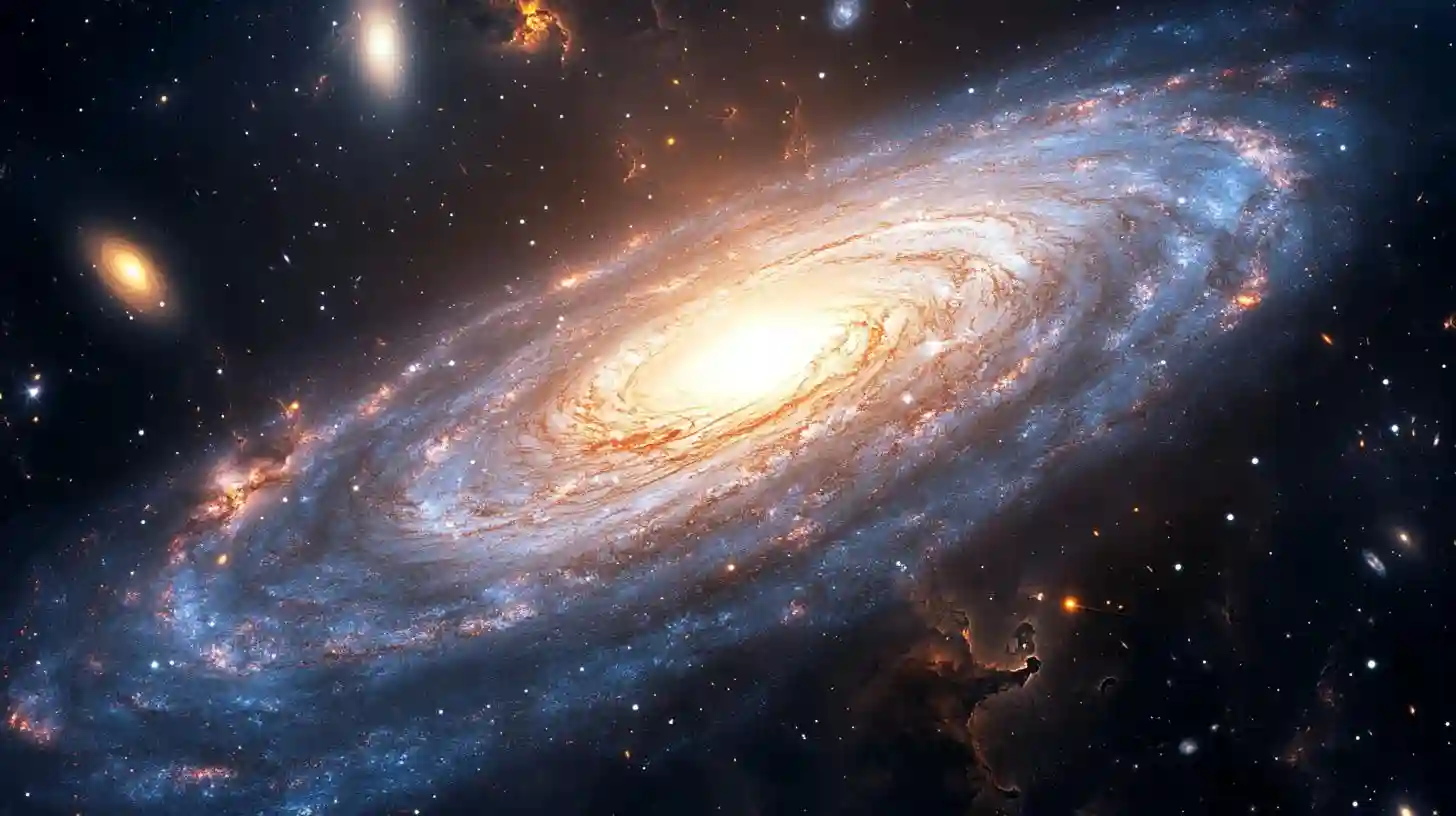
Infospherezone

The vastness of the cosmos has long captivated humanity, stirring imaginations and igniting scientific inquiry. Recently, a groundbreaking discovery has emerged from the depths of space, unveiling a previously unknown galaxy that has left the scientific community buzzing with excitement. This stellar revelation not only enhances our understanding of the universe but also raises intriguing questions about galaxy formation and the nature of cosmic evolution.
Researchers, armed with advanced telescopic technology, stumbled upon this remarkable galaxy while conducting routine observations. Utilizing state-of-the-art instruments that harness the light of distant celestial bodies, they detected signals emanating from an area of space that had been largely overlooked. This new cosmic entity, characterized by its unique structure and luminous properties, challenges existing theories regarding the formation and evolution of galaxies.
What distinguishes this galaxy is its unusual morphological features. Unlike many spiral galaxies that showcase beautifully structured arms of stars and gas, this new discovery possesses a more intricate and chaotic appearance. The galaxy is marked by an unprecedented distribution of stellar populations and nebulae, which appear to be in various stages of formation and evolution. This suggests a dynamic environment conducive to the birth of new stars, making this galaxy a treasure trove for astronomers eager to study stellar mechanics and evolution.
The implications of this discovery extend well beyond its physical characteristics. Its existence forces astronomers to reconsider how galaxies like ours developed over billions of years. Traditionally, models of galaxy formation posited a more linear development, but the chaotic and irregular features of this galaxy indicate that the processes governing galaxy evolution may be far more complex than previously thought. The observations challenge astronomers to rethink the mechanisms that drive the aggregation of matter in the universe.
Moreover, this revelation has implications for our understanding of dark matter and energy, two enigmatic forces that shape the structure of the universe. As scientists analyze the composition of this newly unveiled galaxy, they are presented with the opportunity to gather insight into the role of dark matter in galaxy formation. The distribution of dark matter, which remains largely invisible and undetectable, has a profound impact on how galaxies form and interact. This discovery could provide the missing pieces to the cosmic puzzle and elucidate the composition and behavior of dark matter within the universe.
Additionally, the unique characteristics of this galaxy could redefine parameters used to classify galaxies. Current classifications are based on observable features; however, the discovery poses questions regarding how these categories might fail to encompass the full range of galactic diversity. The notion of galaxy classification as a straightforward system is now being reconsidered, opening the door to a more nuanced understanding of the complexities that exist within our universe.
Notably, this finding has sparked interest beyond the specialized circles of astrophysicists and cosmologists. The public fascination with galaxies and the cosmos at large has been reignited, prompting discussions on social media platforms and in educational forums. People from various backgrounds are engaging with the concepts of space, stars, and galaxies in ways that promote wider scientific literacy. This cultural appreciation for astronomical discoveries enriches society’s collective knowledge and highlights the importance of fundamental research in unlocking the mysteries of our universe.
As scientists continue to explore the implications of this discovery, they are already envisioning future research opportunities. Upcoming projects and observational campaigns aim to delve deeper into the characteristics of this galaxy and its formation processes. Advanced simulations and theoretical models will be developed to analyze the data collected by telescopes. This new galaxy serves as a beacon for the next generation of researchers and enthusiasts who aspire to deepen their understanding of the cosmos.
In a time where boundaries of knowledge are constantly pushed, this latest astronomical revelation brings an invigorating sense of wonder to the scientific community. It reminds us of the vast questions that still linger about the universe and encourages a collective pursuit of answers. As we stand on the fringes of this beautiful galaxy, we are reminded of our own place in the cosmos and the intricate dance of creation that unfolds within the darkness of space. The sky has many stories left to tell, and with each revelation, we are drawn ever closer to understanding the magnificent tapestry of the universe.